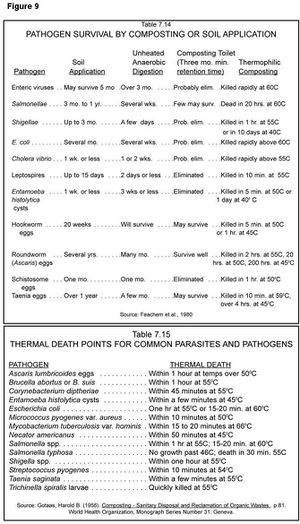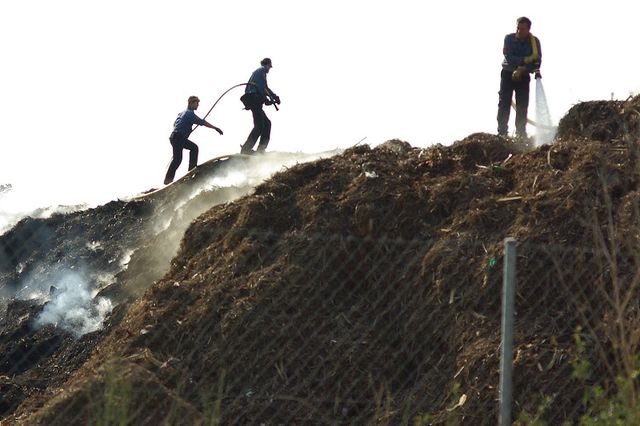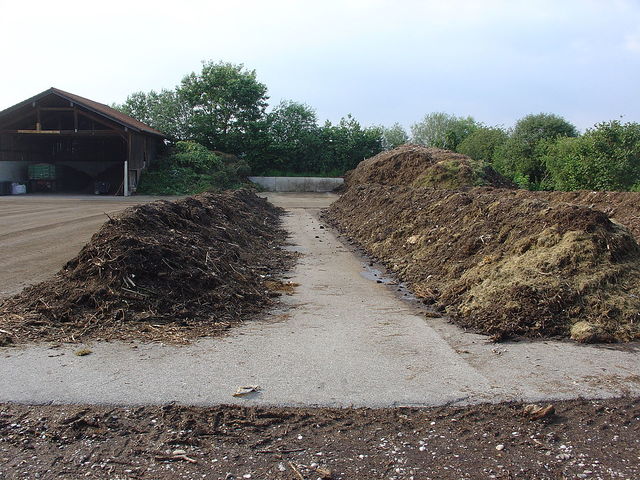Thermophilic compost
Main > Food and Agriculture > Soil and compost

Thermophilic composting is the practice of breaking down biological waste with thermophilic (heat-loving) bacteria. Thermophilic composting is distinct from vermicomposting (which uses worms).
Thermophilic compost heaps must be quite large, 1m3 or larger.
Grass cuttings, wood chips and sawdust should be put into thermophilic compost heaps; food scraps are more suited to vermicomposting.
The key advantage of thermophilic composting is that the high temperatures kill diseases. Human faeces composted by worms is not safe to use on food-plants, but several months of thermophilic composting will render it quite harmless. All the organisms that cause human diseases are adapted to live around human body temperature. Higher temperatures kill them. Compost that stays at 50°C (122°F) for 24 hours will be safe to use to grow food. A temperature of 46°C (115°F) will kill pathogens within a week. 62°C (143.6°F) will kill pathogens in one hour.
The bacteria that make compost need oxygen. This can be provided by sticking holes in the heap with pipes or sticks. Or you can pile in coarse materials like hay when building the compost heap, to create little pockets of air.
Uses of thermophilic compost heaps
- Composting Toilet
- To heat water for washing or radiators. See Hot Shower. An air pump underneath a compost heap can provide oxygen for bacterial activity and get it up to over 70°C (158°F). Such high temperatures are unnecessary for destroying pathogens, but might be used for heating.
- To provide fertilizer for soil

